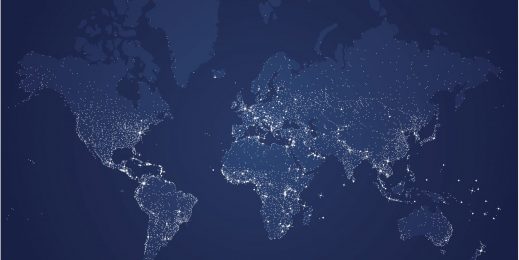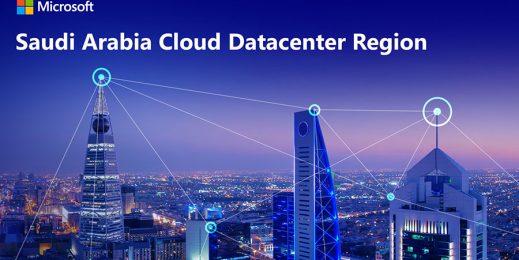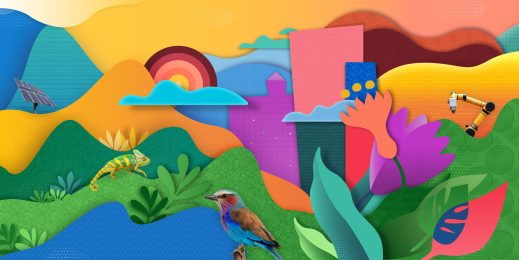
Is the region the birthplace of a digital health revolution?
The power and promise of digital healthcare in the Middle East and Africa
Mirembe, 24, lives in a rural village in north-east Uganda, where access to healthcare is limited. Mirembe is pregnant and walks, cradling her swollen belly and fanning herself from the heat, 15 kilometres to the closest clinic to check on her unborn child.
Hundreds of expectant mothers, elderly men and women, and sickly children line the corridors of the clinic patiently awaiting medical attention. Midwives and nurses are few, and they wearily dart from patient to patient doing what they can to help. Mirembe will wait six hours to be attended to.
When she’s finally seen, she’s told the clinic doesn’t have an ultrasound machine. If she wants to have an ultrasound, she must travel to the Mulago Hospital in Kampala, Uganda’s largest public hospital, where she must pay 20,000 Ugandan shillings, equivalent to about US$5, for a prenatal visit. In this part of the world, that is a significant amount of money.
According to the World Health Organisation (WHO), about 830 women die from pregnancy or childbirth-related complications around the world every day. It’s estimated that in 2015, roughly 303 000 women died during and after pregnancy and childbirth. Many of these deaths were in low-resource locations like Uganda, and most could have been prevented.
However, technology is helping to eliminate some of the challenges of distance and lack of trained medical staff. Mirembe can now hear her unborn child’s heartbeat from the comfort of her own home through an innovative app call WinSenga, which reassures her that both she and her baby are healthy.
WinSenga is a mobile tool, supported by Microsoft technologies, which helps mothers with prenatal care. The idea was conceived when the Microsoft Imagine Cup competition inspired then-university students Okello and Aaron Tushabe to use their computer science skills to tackle some of Africa’s biggest problems. They were motivated by the plight of mothers like Mirembe who live outside the reach of modern medical care.
The handheld device scans the womb of a pregnant woman and reports foetal weight, position, breathing patterns, gestational age, and heart rate. The app makes use of a trumpet-shaped device and a microphone which transmits the data to a smart phone. The mobile application plays the part of the nurse’s ear and recommends a course of action. The analysis and recommendations are uploaded to the cloud and can be accessed by a doctor anywhere.
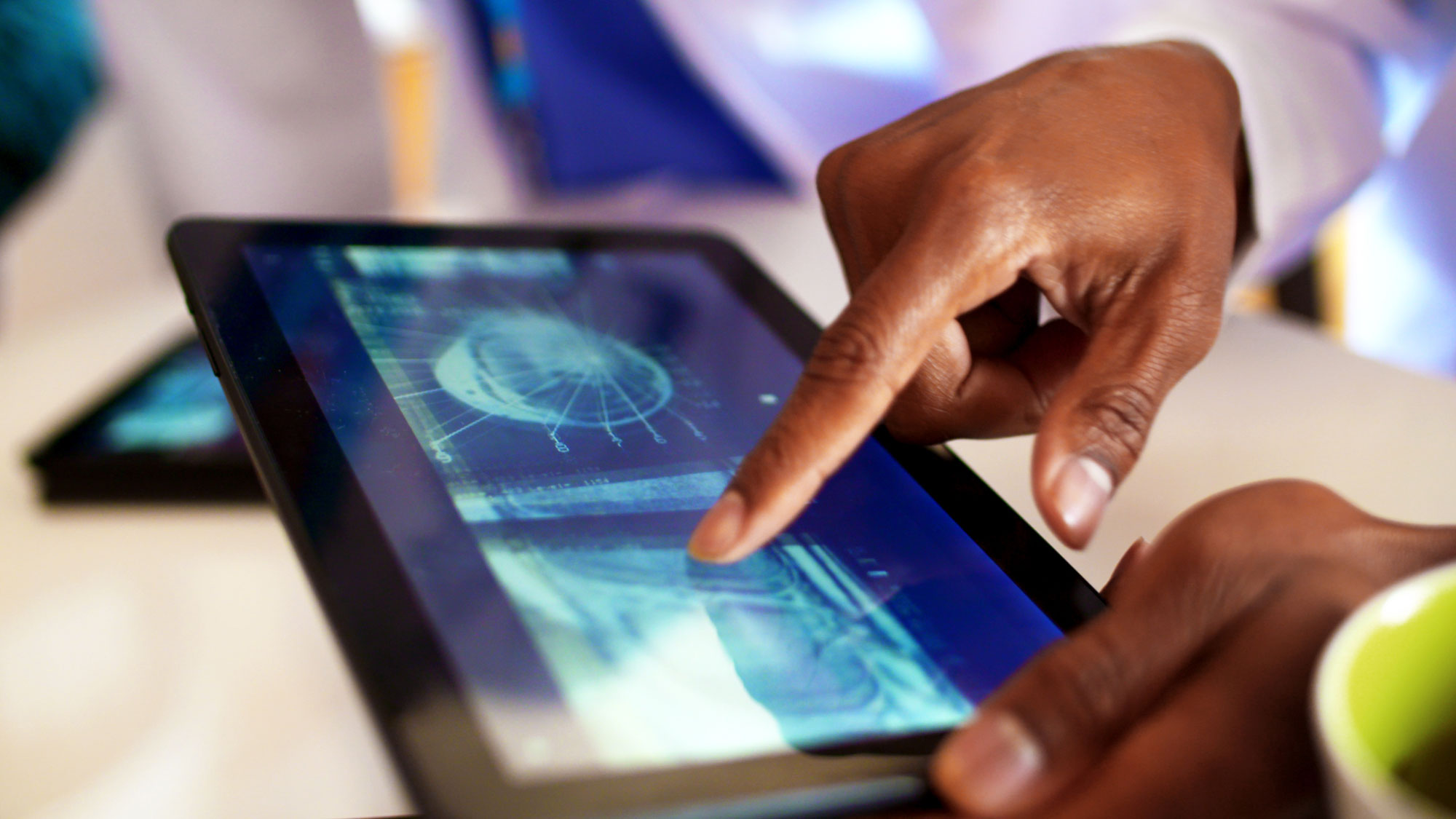
This is just one example of how Africa, a continent that bears one-quarter of the global disease burden but only has two percent of the world’s doctors, could outperform developed nations’ healthcare systems by leapfrogging over inefficiencies and legacy infrastructure.
In fact, digital healthcare in the Middle East and Africa (MEA) region is booming with the proliferation of disruptive solutions underpinned by 21st century innovations like cloud, mobile, Internet of Things (IoT) and Artificial Intelligence (AI).
Let’s talk telemedicine
One trend revolutionising the delivery of healthcare in MEA is telemedicine, which is the use of telecommunication and IT to provide clinical healthcare over long distances. Given the region’s high rate of mobile penetration, telemedicine is growing rapidly. In fact, the telemedicine market in MEA was estimated at $2.19 billion in 2015 and is projected to reach $3.67 billion in 2020.
Forward-thinking countries like Botswana are making swift progress when it comes to the implementation of sustainable telemedicine projects. Microsoft and the Botswana Innovation Hub launched Africa’s first telemedicine service over TV white spaces in 2017. Through this initiative, clinics in outlying areas of Botswana can now access specialised care remotely using TV white spaces, which are unused broadcasting frequencies in the wireless spectrum.
However, many MEA countries are still grappling with the application of policies and regulations that will allow doctors to speak with patients over telemedicine platforms. While telemedicine won’t solve all primary healthcare challenges plaguing the region, with the right policies in place to promote patient privacy and confidentiality, it will be a hugely beneficial tool for reducing the pressure on regional resources and governments.
IoT – Just what the doctor ordered
A little further down the continent in a small rural village called Qunu in the Eastern Cape of South Africa, a new app that harnesses the power of IoT is saving lives. The app, developed by Phulukisa Health Solutions, empowers medical staff at the clinic to provide quality, affordable healthcare to a greater number of patients remotely. Through this app, medical workers can electronically capture the medical information of patients, such as their weight, body mass index, and blood pressure, using IoT sensors and then store these medical records in the Microsoft cloud.
These metrics feed into an algorithm, which alerts healthcare workers of abnormalities and helps them escalate serious health conditions.
Another example of IoT in action is a start-up called CardioDiagnostics, which is helping patients in the Middle East monitor their cardiac health with a wearable Wi-Fi heart monitoring device that relays data to the Microsoft cloud. The idea for CardioDiagnostics was conceptualised by Lebanese entrepreneur Ziad Sankari, who tragically lost a parent to heart disease at an early age. Thousands of patients in the Middle East, and the US, have already benefitted from the 24-7 supervision from clinicians who get real time alerts when something goes wrong.
These examples show how the healthcare industry is undergoing unprecedented transformation thanks to IoT. In fact, the IDC predicts that the MEA IoT market will grow 15 percent year-on-year in 2018, with spending expected to reach almost $12 billion by 2021 as organisations ramp up investments that enable IoT solutions.
As with CardioDiagnostics, eHealth solutions facilitate access to, but don’t replace, qualified medical personnel. In 2011 WHO reported that in 12 countries in Africa there was an average of only 0.64 doctors, physicians, nurses and midwives per 1,000 people. Globally, there was a deficit of over 2.4 million trained staff. To make projects like these sustainable, more skills development programmes are needed to train staff on how to use and maintain IoT services.
Diagnosis: Cloudy. Prognosis: Excellent
Cloud computing is revolutionising the way healthcare providers, doctors, clinics and hospitals deliver care to their patients. In Ethiopia, Microsoft supports the Tulane Health Project, which is helping 3,000 healthcare clinics in 10 regions to digitally transform using the cloud. With Windows devices, Tulane collects relevant health data and now stores more than 150 million digital records securely in the cloud. Using tools like Power BI, Tulane then analyses this data and gives the federal ministry the insights it needs to make data-driven decisions.
For the average patient, this means better consultations, a more accountable government and improved quality healthcare. In addition, 2,500 more Ethiopians have been trained as health information technologists, to run and maintain the system locally.
Another example of the power of cloud computing in Africa is Medical Teams International (MTI), a non-profit provider of healthcare and humanitarian aid. MTI collaborated with Cambia Health Solutions to transform medical care for more than one million South Sudanese refugees as well as Ugandan citizens. They did this by using the cloud to automate data collection, which is improving the speed and accuracy of medical diagnosis and curbing the spread of infectious diseases.
In June 2018, Microsoft announced $1 million in cash and technology grants to three innovative South African non-profits to help them drive greater social impact in South Africa. One of these non-profits is the Sunflower Fund, which plays a critical role in recruiting blood stem cell donors to fight Leukaemia and other life-threatening blood diseases. The Sunflower Fund is leveraging the power of Microsoft’s intelligent cloud, a mobile app, as well as AI to better engage with donors and recipients.
Another non-profit called the LOSEV Foundation in Turkey is also using Microsoft cloud services to help children with leukaemia. According to Sezin Soylu, a co-ordinator at LOSEV, the non-profit has not only managed to raise awareness about leukaemia, but has also sought to teach people how to live a healthy lifestyle. To keep this momentum going, LOSEV embarked on a drive to reach new patients, volunteers and donors and form a secure cloud database. It decided to adopt Microsoft’s intelligent cloud platform to assist them in reaching more people.
“The services and support provided by Microsoft help us reach more patients in need, as well as more volunteers and donors. Having our data securely in the cloud helps us work more effectively in the field, while cutting down on expenses,” says Soylu.
AI for healthcare
AI gives computers the ability to sense their environment, think, learn, and act in response to what they’re sensing. AI empowers people to make better decisions by making sense of mountains of data. In the healthcare space this technology allows doctors and medical professionals to make better diagnoses by improving speed and accuracy, and allows for the controlled maintenance of chronic conditions.
A prime example of AI in healthcare is Delta General Hospital in Belgium, which has partnered with Microsoft to improve treatment of cardiovascular diseases. This has allowed for the progression of more effective and less invasive basic surgical procedures.
With regards to healthcare systems in MEA, a major challenge is people succumbing to diseases that are largely avoidable or treatable. With AI expanding, the medical sector will be able to better streamline processes, reduce costs and better manage chronic diseases.

Mixed Reality enters the mix
With rapid advancements in cloud computing, IoT and AI, 2018 has proven to be a transformative year for doctors and healthcare organisations around the world. A relative newcomer to the digital healthcare space is mixed reality, which is being used for more than entertainment.
A great example of mixed reality is Microsoft’s HoloLens, the world’s first self-contained, holographic computer, enabling you to engage with digital content and interact with holograms in the world around you. Mixed reality has a bright future in healthcare by creating new and improved ways for learning anatomy, practising medical procedures and solving problems.
A hospital in Israel recently used HoloLens for the very first time to successfully remove a cancerous tumour in a patient’s liver, and surgeons in the UK are using HoloLens to help them perform reconstructive surgery.
The future of healthcare is digital – but it’s no silver bullet
The tenuous state of healthcare across the region begs for more investment and innovation. In sub-Saharan Africa, few countries can afford the required amount that the World Health Organisation considers the minimum for the provision of basic health care.
Yet increasingly we are seeing examples like the ones mentioned above changing the face of healthcare in MEA. Every day, technology increasingly helps alleviate the burden on governments by improving access to low-cost preventative treatments.
While healthcare systems in more developed regions are hamstrung by legacy ways of thinking and focused on expensive tertiary care that emphasises treatment over prevention, countries in MEA can be trailblazers of a 21st century model of healthcare.
Wider and more sustainable deployment of these solutions across the region is still needed. Challenges for broader adoption include everything from an unreliable power supply, to the need for broader data network coverage, and more skills development programmes. There’s also a need to improve regulatory and policy frameworks to protect individual patient data while still using data analytics tools and AI to identify trends that may affect the broader population.
There is no ‘silver bullet’ solution and technology alone is not the answer, but technology is undoubtedly an enabler to solving a much larger problem. To make a lasting impact, innovations like WinSenga or CardioDiagnostics must scale and provide solutions across borders, to chart a truly healthier digital future for the citizens of the region.





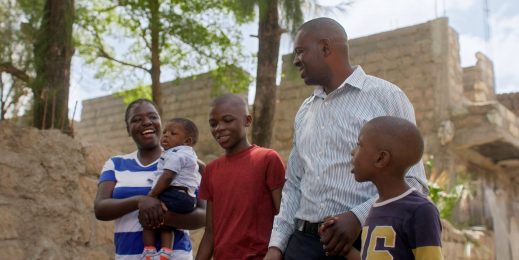




![A security team analyses key data from a visual dashboard.]](https://news.microsoft.com/wp-content/uploads/prod/sites/133/2023/04/Security-Sprint_TL_Banner-Image-519x260.jpg)
